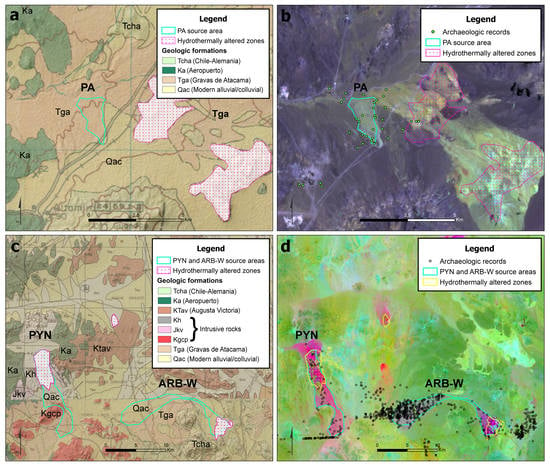Beyond Site Detection: The Role of Satellite Remote Sensing in Analysing Archaeological Problems. A Case Study in Lithic Resource Procurement in the Atacama Desert, Northern Chile
Abstract
Share and Cite
Borie, C.; Parcero-Oubiña, C.; Kwon, Y.; Salazar, D.; Flores, C.; Olguín, L.; Andrade, P. Beyond Site Detection: The Role of Satellite Remote Sensing in Analysing Archaeological Problems. A Case Study in Lithic Resource Procurement in the Atacama Desert, Northern Chile. Remote Sens. 2019, 11, 869. https://doi.org/10.3390/rs11070869
Borie C, Parcero-Oubiña C, Kwon Y, Salazar D, Flores C, Olguín L, Andrade P. Beyond Site Detection: The Role of Satellite Remote Sensing in Analysing Archaeological Problems. A Case Study in Lithic Resource Procurement in the Atacama Desert, Northern Chile. Remote Sensing. 2019; 11(7):869. https://doi.org/10.3390/rs11070869
Chicago/Turabian StyleBorie, César, César Parcero-Oubiña, Youngsang Kwon, Diego Salazar, Carola Flores, Laura Olguín, and Pedro Andrade. 2019. "Beyond Site Detection: The Role of Satellite Remote Sensing in Analysing Archaeological Problems. A Case Study in Lithic Resource Procurement in the Atacama Desert, Northern Chile" Remote Sensing 11, no. 7: 869. https://doi.org/10.3390/rs11070869
APA StyleBorie, C., Parcero-Oubiña, C., Kwon, Y., Salazar, D., Flores, C., Olguín, L., & Andrade, P. (2019). Beyond Site Detection: The Role of Satellite Remote Sensing in Analysing Archaeological Problems. A Case Study in Lithic Resource Procurement in the Atacama Desert, Northern Chile. Remote Sensing, 11(7), 869. https://doi.org/10.3390/rs11070869






